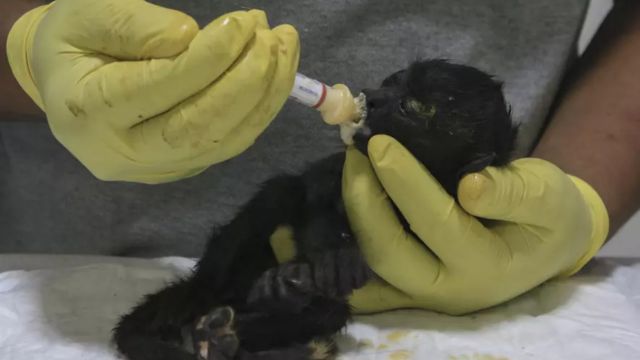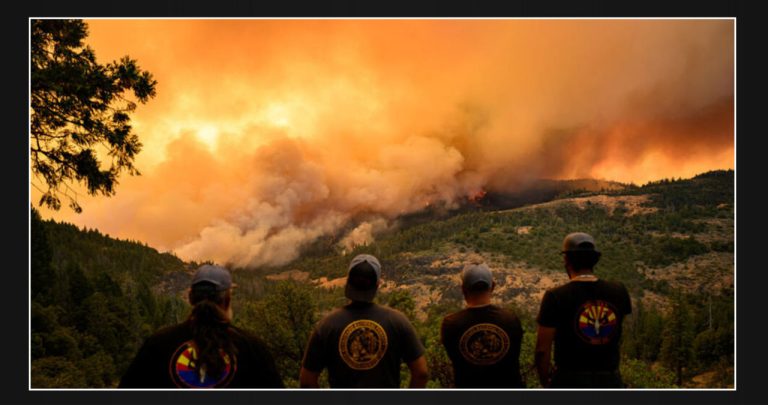According to the government, the number of howler monkey deaths in Mexico due to heat-related causes has now reached 157. Unfortunately, only a few of these primates have received treatment or are currently in the process of recovering.
An animal park in northern Mexico has recently confirmed receiving reports of at least a hundred parrots, bats, and other animals succumbing to dehydration.
A heat dome, a strong high-pressure system centered over the southern Gulf of Mexico and northern Central America, has prevented the formation of clouds, resulting in widespread sunshine and scorching temperatures throughout Mexico.
Environmentalists recently revealed that 138 midsize primates, known for their powerful vocal calls, have been discovered dead in the Gulf coast state of Tabasco since May 16. On Monday, it is anticipated that almost two-thirds of the country will experience scorching temperatures reaching 45 degrees Celsius (113 degrees Fahrenheit).
According to the Environment Department, the number of deaths has now increased to 157, and they are currently conducting further research to determine the causes behind these fatalities.
Wildlife biologist Gilberto Pozo believes that the deaths of the monkeys were caused by heat stroke. He explains that a combination of factors, including high temperatures, drought, forest fires, and logging, have deprived the monkeys of water, shade, and the fruit they eat. While Pozo does not rule out the possibility of a pathogen, disease, or other factor, he emphasizes that the synergy of these environmental conditions is likely to blame.
According to the department, fatalities are being reported in both Tabasco and the nearby state of Chiapas. Currently, 13 monkeys are undergoing treatment, while seven have already been treated and released back into their natural habitat. Dehydration is among the conditions being addressed, with three monkeys currently in a serious but stable condition.
However, the survival of the howler monkeys remained uncertain due to the adverse effects of heat, fires, and deforestation on their natural habitat. Releasing them back into the wild might not guarantee their long-term survival.
Ena Buenfil, the director of the Selva Teenek eco-park in the northern state of San Luis Potosi, expressed her distress over the rising death toll of parrots, bats, and toucans due to the scorching heat. In an interview with The Associated Press on Monday, Buenfil shared that her facility has been inundated and unable to cope with the overwhelming number of casualties.
According to Buenfil, their animal clinic was inundated with sick birds and they received numerous reports from locals about finding dead or distressed birds when the heat wave started in mid-May.
Buenfil mentioned that due to limited resources, the reported number of affected animals is probably just a fraction of the actual count. However, he emphasized that their organization has collaborated with Civil Protection to provide assistance to a few birds in need.
According to Buenfil, birds primarily perish from dehydration during hot weather, as they lack the ability to store water. Additionally, bats can become dehydrated while sleeping in the scorching afternoon heat. To mitigate this, Buenfil suggests that locals consider placing bowls of water outside for these animals.
According to her, the current situation is unprecedented. She emphasized that if they continue to observe similar heat waves in the future, there will be limited options available to assist the animals.
Buenfil expressed concern about the devastating impact of heat waves on the ecosystem in the region. According to him, if this trend continues, there will be significant casualties.
Howler monkeys are often seen as intimidating creatures due to their muscular build and impressive size. Standing at a height of up to 90 centimeters (3 feet) and with tails just as long, they command attention. Some male howler monkeys can weigh over 13.5 kilograms (30 pounds) and have a lifespan of up to 20 years. What sets them apart are their powerful jaws and formidable teeth and fangs. However, it is their lion-like roars that truly capture the imagination, defying their relatively small stature.
The country has experienced a significant decrease in rainfall this year, leading to a concerning situation of drying lakes and dams, as well as dwindling water supplies. To address this issue, authorities have resorted to transporting water for crucial purposes like hospitals and firefighting operations. Additionally, the low levels of water in hydroelectric dams have resulted in power outages in certain areas.



